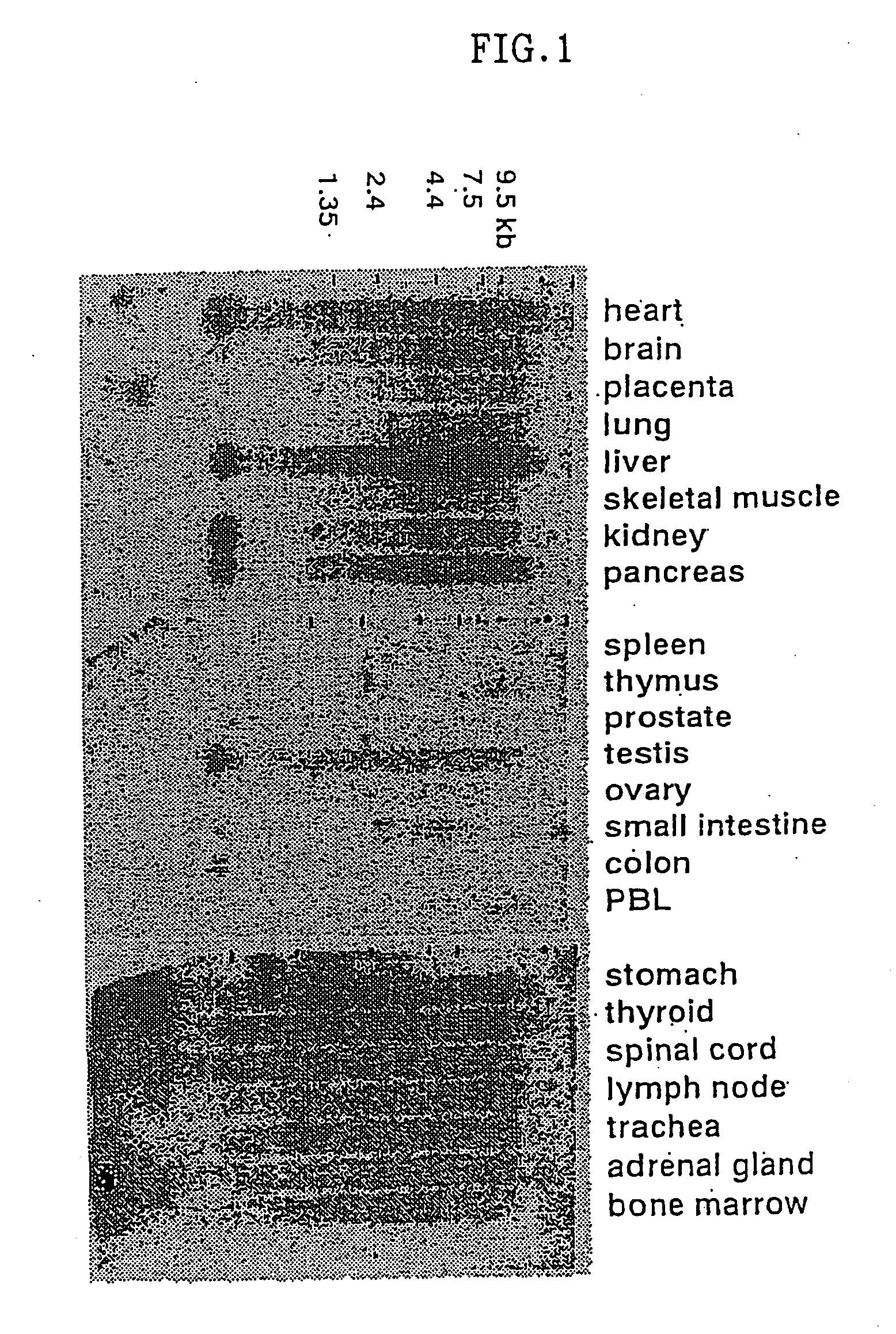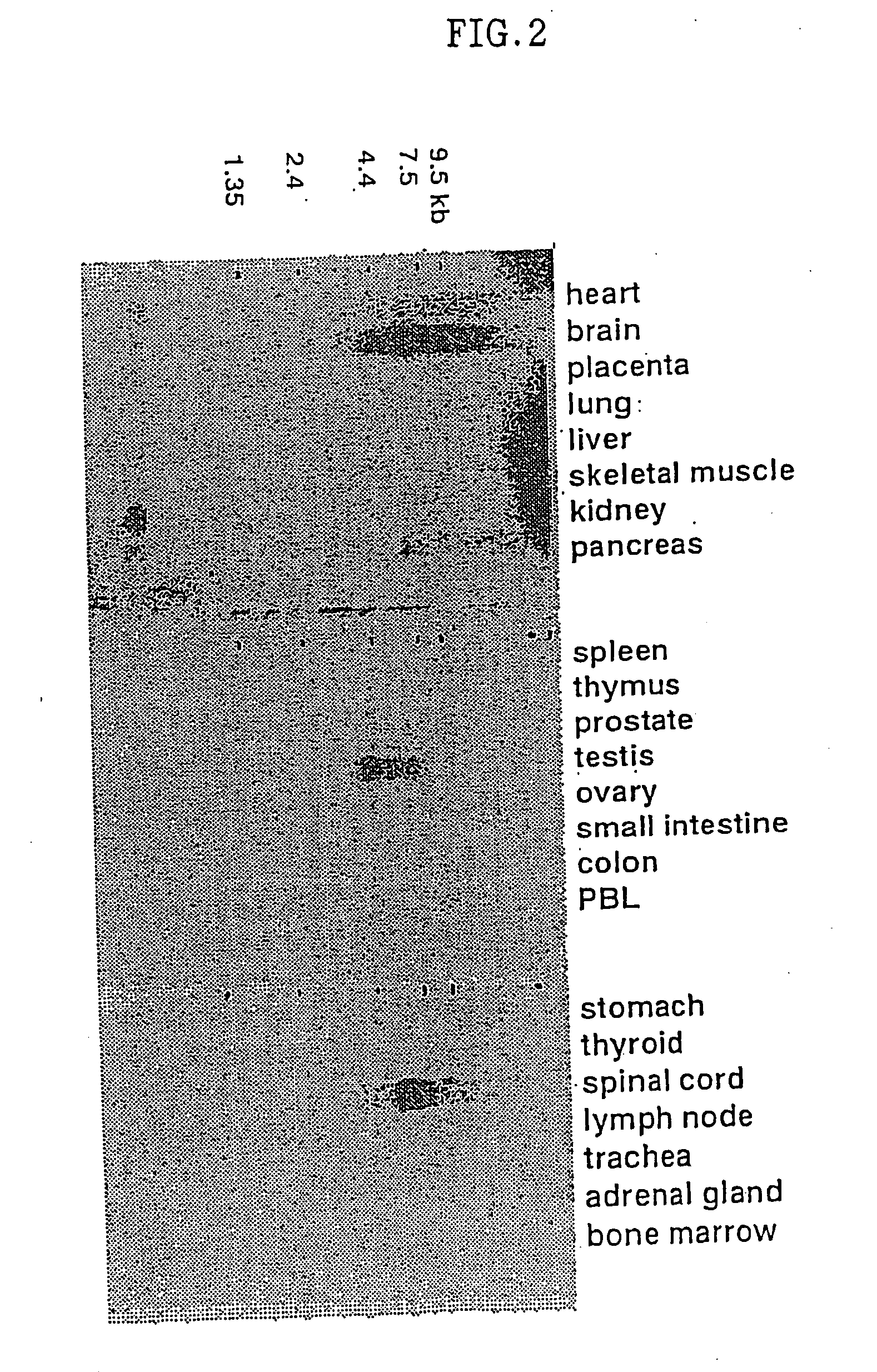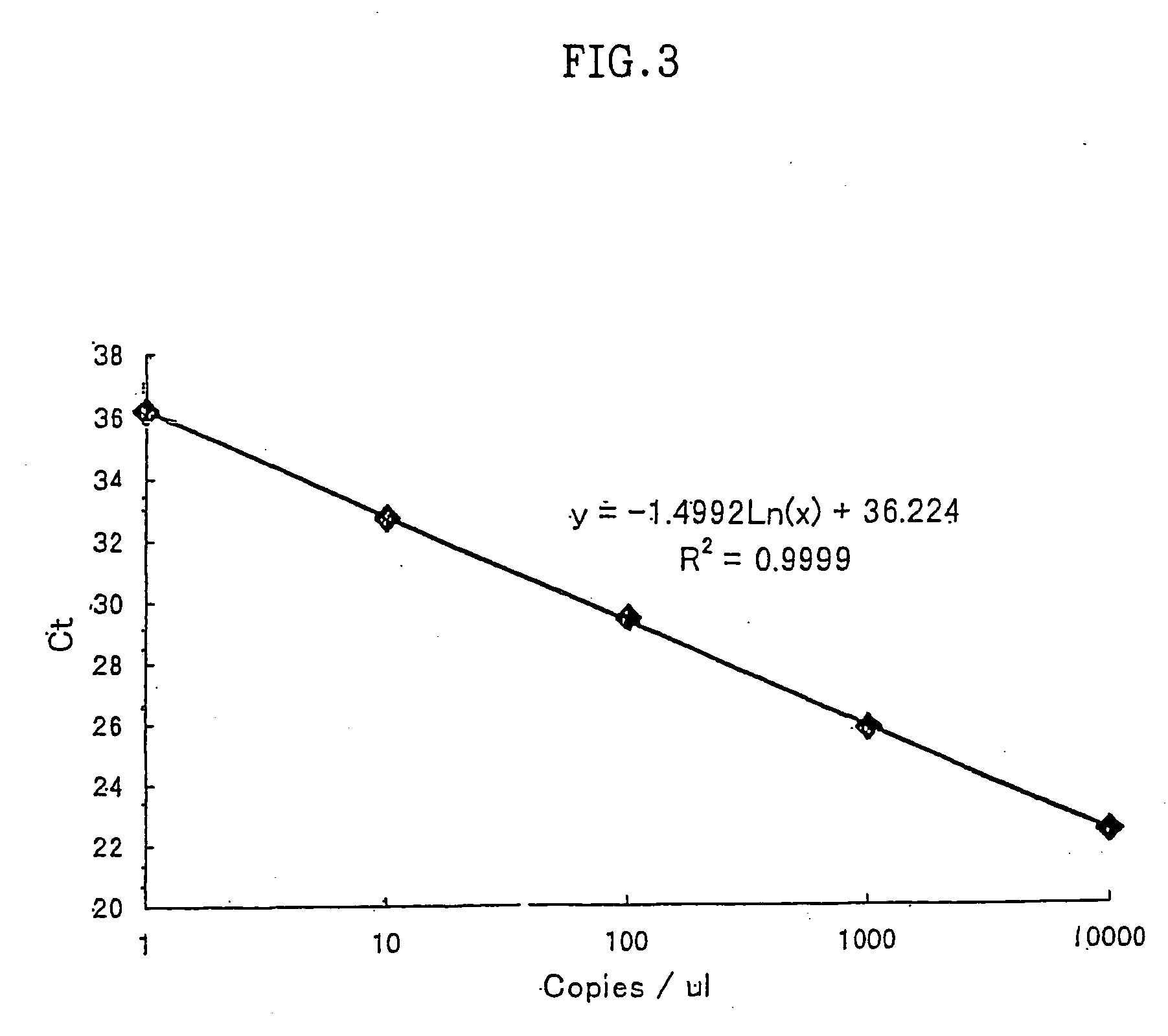Novel protein, production and use thereof
a technology of ssd-containing proteins and ssd-containing proteins, which is applied in the field of new ssd-containing proteins, can solve the problems that cannot be explained by ssd-containing proteins found up to now, and achieve the effect of increasing the proteolysis of macrophage neutral cholesterol esteras
- Summary
- Abstract
- Description
- Claims
- Application Information
AI Technical Summary
Benefits of technology
Problems solved by technology
Method used
Image
Examples
example 1
Cloning of cDNA Encoding the Human Liver-Derived SSP1 Protein
[0478] The cDNA encoding human SSP1 protein was cloned by conducting PCR using a human liver-derived cDNA library according to the following procedure. PCR was carried out using the oligo DNA shown by SEQ ID NO: 1 as a sense chain primer and the oligo DNA shown by SEQ ID NO: 2 as an anti-sense chain primer, and using human live-derived Gene Pool cDNA (Invitrogen) and cDNA obtained by RT-PCR using a random primer from mRNA purified from HepG2 cell to obtain a 5′-upstream sequence containing each primer as a starting point. In the same way, PCR was carried out using the oligo DNAs shown by SEQ ID NO: 3 and SEQ ID NO: 4 as a sense chain primer and an anti-sense primer, respectively, to obtain a sequence containing each primer as a starting point, downstream of the above sequence. Further, PCR was carried out using the oligo DNAs shown by SEQ ID NO: 5 and SEQ ID NO: 6 as a sense chain primer and an anti-sense primer, respecti...
example 2
Cloning of cDNA Encoding the Human Testis-Derived SSP2 Protein
[0480] The cDNA encoding human SSP2 protein was cloned by conducting PCR using a human testis-derived cDNA library according to the following procedure. 5′-RACE was carried out using the oligo DNA shown by SEQ ID NO: 10 as an anti-sense chain primer, and human testis-derived Marathon-Ready cDNA (CLONTECH) to obtain a 5′-upstream sequence containing each primer as a starting point. In the same manner as the case of cloning cDNA encoding the human SSP1 protein, PCR was carried out using the oligo DNAs shown by SEQ ID NO: 11 and SEQ ID NO: 12 as a sense chain primer and an anti-sense primer, respectively, to obtain a sequence containing each primer as a starting point, downstream of the above sequence. Further, PCR was carried out using the oligo DNAs shown by SEQ ID NO: 13 and SEQ ID NO: 14 as a sense chain primer and an anti-sense primer, respectively, to obtain a 3′-downstream sequence containing each primer as a startin...
example 3
Analysis of SSP1 Expression in Human Tissues and its Tissue Specificity
[0483] A probe used for northern analysis was prepared by effecting PCR according to the following procedure using a human fetus-derived cDNA library. PCR was carried out using the oligo DNA shown by SEQ ID NO: 18 as a sense chain primer and the oligo DNA shown by SEQ ID NO: 19 as an anti-sense chain primer, and using human fetus-derived Marathon Ready cDNA (CLONTECH). Then, using the resulting amplified product, PCR was carried out with the oligo DNA shown by SEQ ID NO: 20 as a sense chain primer and the oligo DNA shown by SEQ ID NO: 21 as an anti-sense chain primer to obtain the cDNA shown by SEQ ID NO: 22.
[0484] The tissue specificity of SSP1mRNA expression was analyzed (FIG. 1) by using the cDNA shown by SEQ ID NO: 22 as a probe and hybridizing it to Multiple Tissue Northern Blots (CLONTECH), Multiple Tissue Northern Blots II (CLONTECH), and Multiple Tissue Northern Blots III (CLONTECH). As shown in FIG. 1,...
PUM
| Property | Measurement | Unit |
|---|---|---|
| temperature | aaaaa | aaaaa |
| temperature | aaaaa | aaaaa |
| temperature | aaaaa | aaaaa |
Abstract
Description
Claims
Application Information
 Login to View More
Login to View More - R&D
- Intellectual Property
- Life Sciences
- Materials
- Tech Scout
- Unparalleled Data Quality
- Higher Quality Content
- 60% Fewer Hallucinations
Browse by: Latest US Patents, China's latest patents, Technical Efficacy Thesaurus, Application Domain, Technology Topic, Popular Technical Reports.
© 2025 PatSnap. All rights reserved.Legal|Privacy policy|Modern Slavery Act Transparency Statement|Sitemap|About US| Contact US: help@patsnap.com



